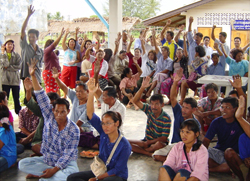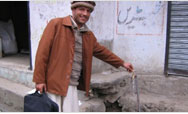You are here » Home » Telling Our Story
Photo & Caption
Rebuilding Villages through Consensus

| |
Photo: AIT/Vinij Tan
|
|
Villagers from the Kampuan subdistrict in southern Thailand gather regularly at town hall meetings to discuss relief efforts and community priorities.
|
After the December 2004 tsunami hit Thailand, the central government took charge of relief efforts across the country. Although this was beneficial in many ways, one consequence was that local authorities lost their say in reconstruction efforts in their communities.
Villagers in the tsunami-affected subdistrict of Kampuan in southern Thailand’s Ranong province said this system was often frustrating — they did not know who to turn to or how to apply for assistance. They felt that, with more local input, their needs could be met better and they could help establish a fairer system for distributing relief and targeting reconstruction. Tensions were growing, heightened by monsoon rains, limited resources, and lost livelihoods. If they could facilitate coordination between relief efforts and affected parties, the villagers were confident they would make the recovery process more effective and reduce stress and conflict.
USAID heard about the villagers’ dilemma and began working to encourage input and participation from all affected parties in reconstruction decisions. Thousands of villagers gathered at meetings with government officials to discuss and identify community needs and priorities.
With USAID assistance, communities learned how to map a course of action and ensure that decisions were made in a democratic manner. For example, villagers from Kampuan elected one male and one female representative who now communicate their concerns to government officials and relay reconstruction-related news to their community. Villagers also worked out the criteria for prioritizing aid and mechanisms to ensure that aid is delivered in a transparent manner. Together, these measures are improving reconstruction efforts and mitigating conflict within affected communities.
Print-friendly version of this page (494kb - PDF)
Click here for high-res photo
Back to Top ^ | 

